Title: Bertoua
Dates: 20th/21st February GPS:
A Visit to the Plan International Projects at Bertoua, South-Eastern Cameroon
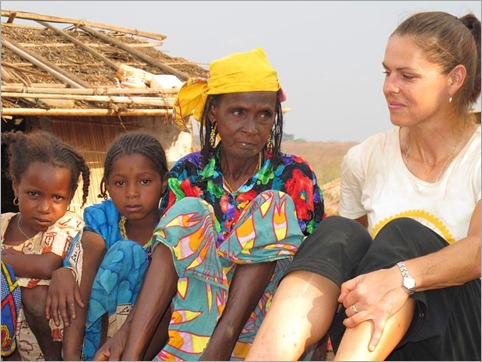
I had to time our arrival in Yaounde with the arranged visit to Bertoua to learn about Plan’s Baka Rights and Dignity Project. After a recovery day – during which I met the Plan Cameroon Director, Amadou Bocoum and other staff in the head office, Yaounde – John, Zdenek and I set off to Bertoua, a 350km drive to the east.
Baka people belong to the ethnic and linguistic group of the Pygmies. Roughly 75,000 Baka live in isolated communities spread throughout the rainforest in south-east Cameroon. The Cameroon government require that the Baka make the transition from their traditional nomadic lifestyle to settle in small villages in the forest. The adapting to a sedentary lifestyle poses many challenges such as access to Cameroonian nationality, social services and property, including land ownership. Without identification papers their nationality can be questioned. The Baka Rights and Dignity Project (BRD) supports the Baka to improve their bargaining skills and empowers them to claim their rights. These include rights to education, healthcare, the rights of women and children (in the matriarchal communities), knowledge about legal procedures and the right to be registered at birth. The program also aims at strengthening Baka’s self esteem by focusing on problems of integration with the rest of society. Problems faced by Baka youths include suicide, malnutrition, sexual exploitation, child labour, trafficking, unemployment and drug abuse. The project helps to address these serious issues. Other marginalised ethnic groups in the region, such as the Mbororo and Bantu are also included in Plan’s work.
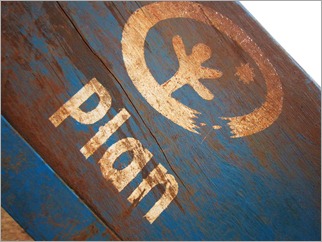 We met our Plan guide Tom, second-in-charge of the project at Doume, about 50km from Bertoua. We followed the Plan vehicle into the forest to make brief visits to two villages to get a snapshot of the communities, their issues and how they live. The first village we visited, a community of about 250 people was at the end of the track. The people came out of the forest in 1982 and it was evident that they were really struggling to adapt to a sedentary lifestyle. Plan had built some of the permanent buildings, a school and infrastructure. Nineteen children here had Plan sponsors. We sat with the village leaders, surrounded by many children and discussed what it was like to live in a village and what their biggest needs are. A village leader said they were most in need of better roads so they can more easily transport their food and reach help if required, a health centre and to the pump repaired…not another fixing the pump issue! John, a little exasperated (as I was too), asked whether we could see the pump. It had been broken for two years. It is difficult to understand why they can’t repair such a simple problem. Tom explained that they had shown them what they should do about it, but no paper work had been submitted and no action taken by the community leaders. Plan’s work here
We met our Plan guide Tom, second-in-charge of the project at Doume, about 50km from Bertoua. We followed the Plan vehicle into the forest to make brief visits to two villages to get a snapshot of the communities, their issues and how they live. The first village we visited, a community of about 250 people was at the end of the track. The people came out of the forest in 1982 and it was evident that they were really struggling to adapt to a sedentary lifestyle. Plan had built some of the permanent buildings, a school and infrastructure. Nineteen children here had Plan sponsors. We sat with the village leaders, surrounded by many children and discussed what it was like to live in a village and what their biggest needs are. A village leader said they were most in need of better roads so they can more easily transport their food and reach help if required, a health centre and to the pump repaired…not another fixing the pump issue! John, a little exasperated (as I was too), asked whether we could see the pump. It had been broken for two years. It is difficult to understand why they can’t repair such a simple problem. Tom explained that they had shown them what they should do about it, but no paper work had been submitted and no action taken by the community leaders. Plan’s work here 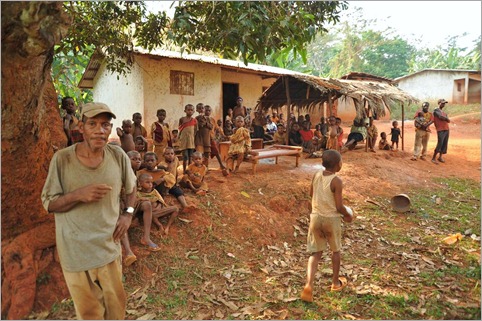 is to train management skills and leadership so that they can implement their own initiatives – a sustainable theory, which I totally agree with, but here there is still plenty of work to do. Tom says they do not have the will at present. I felt saddened and looked around. There were obviously plenty of health issues too. Polio is still a threatening disease in this community. The village chief was not a dynamic personality and kept his distance; others were more forthcoming to communicate with us. I set off for the second village feeling pretty frustrated. I wanted to know and understand more.
is to train management skills and leadership so that they can implement their own initiatives – a sustainable theory, which I totally agree with, but here there is still plenty of work to do. Tom says they do not have the will at present. I felt saddened and looked around. There were obviously plenty of health issues too. Polio is still a threatening disease in this community. The village chief was not a dynamic personality and kept his distance; others were more forthcoming to communicate with us. I set off for the second village feeling pretty frustrated. I wanted to know and understand more.
The second village, which Tom explained was a showcase example, was bigger and much more advanced. Settlement started in 1970; there was more space, more food grown, a cultural centre and the pump worked. Apparently the pump had broken down in the past, but they learned how to fix it and took the initiative on themselves. They had much stronger leadership and organisation. Tom said that Plan are arranging for a delegation from the first village to visit the second village to learn and hopefully be empowered by what they have achieved. The second village is closer to the main road which makes interactions with other communities easier. John bought a hand of bananas and we set off for Bertoua where we stayed in the clean and affordable Catholic Mission.
The following day was a Sunday, so it was difficult to find someone to show us around on their day off. Despite this Denis, the Regional and BRD Project Coordinator met with us and we learned much more about what they do and how they are adopting the “Council Approach” to make sustainable change in the communities. He said that the BRD project is complex as different communities are faced with their own specific problems which require individual solutions. Much of their work with the education about their rights and knowledge of legal procedures goes unseen, but without making this work a priority, all the improvements in infrastructure and other more visible actions would be a waste of time and energy. These people have had to start from scratch. For example, they need to be taught how to manage money, trade and negotiate with other cultures, work within the law, make democratic decisions, communicate, how to farm and learn about land ownership. Their own dignity and self-esteem needs to be preserved by acknowledging and practicing their cultural heritage.
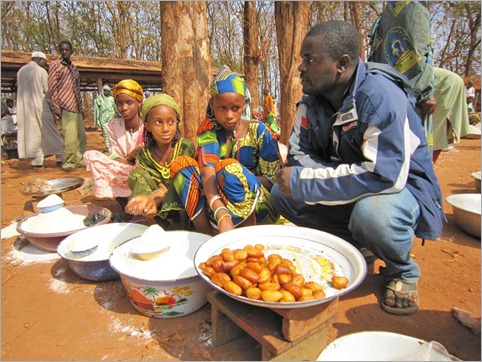
Unable to visit any Baka communities on the Sunday, Denis came up with another plan – to visit an Mbororo village market. The same village was also home to a few thousand refugees who have fled from the rebels in the Central African Republic. Valentine, the Early Childcare Development Coordinator met us in the early afternoon and we drove east along the Batouri Road to the town of approximately 5000 people (inclusive of refugees). On the way we passed many logging trucks, many overloaded, and all transporting massive logs from the rainforests of the Central African Republic. The companies are Lebanese and Chinese owned. Apparently they extract the tallest trees and leave the under stories for local people to exploit for their own use.
The Mbororo are a type of Fulani culture – the same ethnic group we have been meeting across the Sahel since Senegal. They are nomadic but that does not necessarily mean that they are poor. They have a tall, thin stature with striking features. The women are usually beautifully dressed, showing their wealth and status with what they wear. They are of Islamic religion and marginalised as a group in southern Cameroon. The market was in full swing when we arrived and Valentine gave us a tour. Even the medicine man was there, surrounded by children who will to believe his magic remedies. Valentine found Hannatou, the early childhood teacher, with whom he regularly works. Hannatou not only teaches the 2-4 year olds, she is responsible for their vaccinations, health care, nutrition and general development. Demand on looking after this age group is overwhelming due to the influx of refugees from across the CAR border and a new classroom has recently been opened behind the primary school.
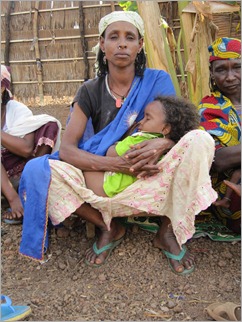 Communicating with the refugees is an important part of Hannatou’s work. She led Valentine, Zdenek and I to one of the refugee dwellings to have a chat with the women. We were privileged to have an opportunity to gain insight into the situation in the CAR, but this exchange was also my most confronting, harrowing experience of this journey so far. They laid out a mat for us to sit on. Hannatou interpreted from Fulbe to French and Valentine then translated to English. The matriarchal grandmother figure told her story – sadly a story which can be replicated many thousands of times over in these parts. She lived with her husband and about eight children in the forests of south west CAR. They were wealthy cattle herders. About three years ago they were visited by rebels – disgruntled failed opposition to the CAR government. The rebels kidnapped three of their children and demanded a ransom of 10 million CFA ($25,000AUD). The husband was able to pay and the children were returned. The rebels came back, kidnapped the children and demanded the same ransom, again threatening to kill them. This time they sold all that they had to pay the rebels. The bandits returned a third time and took the children. This time they could not pay so the rebels killed the husband and three children. The woman fled with the rest of her family and gave birth to a child while on the run. She said that she did not know where she was going. She just ran in fear and did not sleep for months. As she recalled the horrors, her already wrinkled, weathered face creased up and tears flowed. Her eyes were filled with unfathomable grief. I tried to be strong for her, but a few tears worked their way to the surface. To look at the photographs of this woman, she appears like a grandmother in her 60’s or 70’s, but as she was at least of child-bearing age three years ago, she can only be in her mid-late 40’s; not much older than me. Valentine and Hannatou had heard it all before unfortunately, so while they also felt for the woman, they are somewhat hardened to such stories. Anyone working in these situations has to be for their own sanity. Man’s inhumanity to man is sometimes incomprehensible and impossible to understand. The woman spoke on behalf of them all. They are grateful to have a safe, secure place to live and do not wish to return to the CAR. In Cameroon they have a fresh start and an opportunity for their children to grow up without fear. They are being educated and have access to health care facilities thanks to the combined efforts of a number of agencies. Here Plan works with UNHCR, the Red Cross and a couple of other French NGO’s.
Communicating with the refugees is an important part of Hannatou’s work. She led Valentine, Zdenek and I to one of the refugee dwellings to have a chat with the women. We were privileged to have an opportunity to gain insight into the situation in the CAR, but this exchange was also my most confronting, harrowing experience of this journey so far. They laid out a mat for us to sit on. Hannatou interpreted from Fulbe to French and Valentine then translated to English. The matriarchal grandmother figure told her story – sadly a story which can be replicated many thousands of times over in these parts. She lived with her husband and about eight children in the forests of south west CAR. They were wealthy cattle herders. About three years ago they were visited by rebels – disgruntled failed opposition to the CAR government. The rebels kidnapped three of their children and demanded a ransom of 10 million CFA ($25,000AUD). The husband was able to pay and the children were returned. The rebels came back, kidnapped the children and demanded the same ransom, again threatening to kill them. This time they sold all that they had to pay the rebels. The bandits returned a third time and took the children. This time they could not pay so the rebels killed the husband and three children. The woman fled with the rest of her family and gave birth to a child while on the run. She said that she did not know where she was going. She just ran in fear and did not sleep for months. As she recalled the horrors, her already wrinkled, weathered face creased up and tears flowed. Her eyes were filled with unfathomable grief. I tried to be strong for her, but a few tears worked their way to the surface. To look at the photographs of this woman, she appears like a grandmother in her 60’s or 70’s, but as she was at least of child-bearing age three years ago, she can only be in her mid-late 40’s; not much older than me. Valentine and Hannatou had heard it all before unfortunately, so while they also felt for the woman, they are somewhat hardened to such stories. Anyone working in these situations has to be for their own sanity. Man’s inhumanity to man is sometimes incomprehensible and impossible to understand. The woman spoke on behalf of them all. They are grateful to have a safe, secure place to live and do not wish to return to the CAR. In Cameroon they have a fresh start and an opportunity for their children to grow up without fear. They are being educated and have access to health care facilities thanks to the combined efforts of a number of agencies. Here Plan works with UNHCR, the Red Cross and a couple of other French NGO’s.
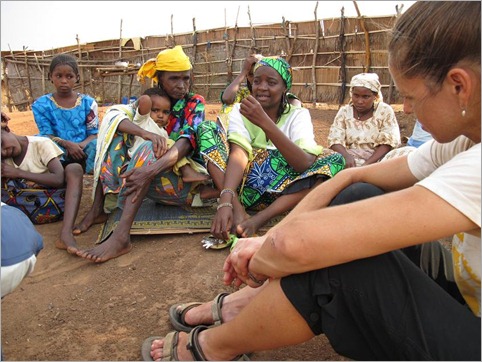
The following day, on the way back to Yaounde, we returned to the more advanced Baka village for a closer look at their culture and issues. This time Samuel, Plan’s Capacity Building Coordinator took us around. First stop was the school to talk with the three teachers. The school is a government school which receives the ‘minimum package’. Plan contribute some of the learning materials and support. It was a Monday but there were no students in class. Debao, the Head Teacher explained that the children were all out in the forest gathering food. She said food security was the biggest obstacle here. If kids are hungry they cannot concentrate and learn. While some food is produced, it is a very much a hand to mouth existence. Many adults are employed by the more businesslike Bantu people who pay a very small salary. This coupled with a lack of business and management skills means they cannot get ahead themselves. Everyone has to work to get food. Alcohol and drugs are a big problem affecting productivity and self esteem and drug education starts in school. I 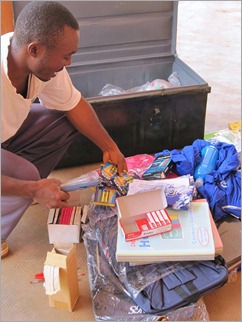 suggested the idea of the students growing a garden at school, but then Debao pointed to an overgrown patch of weeds and grass beside the classroom. She’d already tried that. They had planted cassava and other vegetables, but before it was ready, an inebriated member of the community came and pulled everything up, destroying the garden. To improve education the teachers need much more support from the community. I thought they were doing a great job with what they had, but there was also a sense of exasperation amongst the teachers. They are very keen to connect with international schools to enrich the learning process. She thought it may be a good way to provide a stimulus to keep children in class and build more pride. Anyone wishing to help can contact them via Samuel at Plan. The details are on the education Ning on this website.
suggested the idea of the students growing a garden at school, but then Debao pointed to an overgrown patch of weeds and grass beside the classroom. She’d already tried that. They had planted cassava and other vegetables, but before it was ready, an inebriated member of the community came and pulled everything up, destroying the garden. To improve education the teachers need much more support from the community. I thought they were doing a great job with what they had, but there was also a sense of exasperation amongst the teachers. They are very keen to connect with international schools to enrich the learning process. She thought it may be a good way to provide a stimulus to keep children in class and build more pride. Anyone wishing to help can contact them via Samuel at Plan. The details are on the education Ning on this website.
Next we met with some of the community leaders in the centre of the village. They have a council system, like a village committee, to manage the different key areas from infrastructure, water and sanitation, women’s and children’s rights, land and so on. I wanted to learn something more of their culture and asked if they could take us into the forest to search for some of the plants they use for medicines. Knowledge of the forest is what they specialise in. The medicine woman led us a short way into the undergrowth. First she scraped some bark off a solea tree. The shavings are used to treat stomach upsets. Kpoo 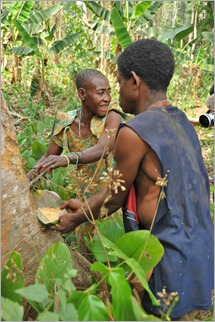 Sasa leaves are collected and boiled to treat stomach and diarrhoea. Then they picked a large fruit, the size of a small rockmelon. The motokotoko has many important uses. Noel, the village leader explained that he used it to treat diabetes. He’d been visited by many people wanting his treatment and university students wanting to study it. He said many experts wanted to extract his knowledge but not reward him. I tasted the seed, also used to treat malaria. The only way I can describe the taste is shockingly bitter – a little like quinine in tonic water but about a thousand times stronger! The taste remained for the rest of the day. I am sure there is a future in developing this unique knowhow into a marketable business. Their knowledge and skills of the bush are what defines them and they must fight to retain it. Business acumen however is not in their makeup and so at present they are vulnerable to exploitation. The marketability for treatments of such major diseases is immense, but they need help in reaching that point. Achieving the objectives of the Baka Rights and Dignity Project is essential to build a foundation before such projects can be successful. I am not the first to suggest the potential of such an initiative (Noel says I am the second person to suggest it to him).
Sasa leaves are collected and boiled to treat stomach and diarrhoea. Then they picked a large fruit, the size of a small rockmelon. The motokotoko has many important uses. Noel, the village leader explained that he used it to treat diabetes. He’d been visited by many people wanting his treatment and university students wanting to study it. He said many experts wanted to extract his knowledge but not reward him. I tasted the seed, also used to treat malaria. The only way I can describe the taste is shockingly bitter – a little like quinine in tonic water but about a thousand times stronger! The taste remained for the rest of the day. I am sure there is a future in developing this unique knowhow into a marketable business. Their knowledge and skills of the bush are what defines them and they must fight to retain it. Business acumen however is not in their makeup and so at present they are vulnerable to exploitation. The marketability for treatments of such major diseases is immense, but they need help in reaching that point. Achieving the objectives of the Baka Rights and Dignity Project is essential to build a foundation before such projects can be successful. I am not the first to suggest the potential of such an initiative (Noel says I am the second person to suggest it to him).
I wanted to stay longer but with a five hour drive back to Yaounde and rain threatening, we were already late to leave. I thank Plan Cameroon for making such a wonderful effort to show us a snapshot of some of their very important work.

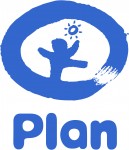

{ 6 comments… read them below or add one }
Hi Kate,
How are you going?
My name is Annabelle and I am in Grade 6 at Barwon Heads Primary. Our topic this term is Poverty and we are following your progress very closely. I just wanted to let you know that I think what your doing is really great, and I would love to be inspired by you to do something as amazing as you are doing. Did you train at the beach for practice at riding in the sand?
Good Luck, Keep at it and remember to smile!=)
Sincerely Annabelle
Hi Kate,
I hope you are going well.
Im Darcy and I am a grade 6 student at Barwon Heads Primary but I did this message at home.
I would like to know if you have any pain in your legs when you are riding.
Do you have to ride in the sand a lot or not much. I think it is great what you are doing. Keep on going and good luck.
Best Wishes, Darcy
Hi Kate and team, I am a teacher at Barwon Heads PS Victoria, following your journey with my class and John BUrdess the other teacher in our grade 6. The info about Plan Cameroon is very interesting and seems similar to our own aboriginal communities here in Australia. So much to learn from them but as they become more westernized, so much to teach them.Assisting them to adapt to a sedentary lifestyle seems a repeat of what happens to our own indigenous people. I hope they make the transition more successfully than some of our own efforts. My heart goes out to those women and their families who have been displaced and lost their children because of violence and disgruntled rebels. Keep up the great work. We are thoroughly enjoying your journey.
Hi Robyn,
I’m very pleased that Barwon Head PS are getting so involved in the program.
I also agree hat there are many similarities between many of the Aboriginal issues and the Baka. I learned a lot about these during my Australian expedition (see my book Out There and Back)
Best regards,
Kate
Dear Kate,
I noted that you very tide schedule did not allow you time to meet with us upon your return from Bertoua. I also want to think you tried joining me but could not because we were in a meeting. Hope you found your stay and visit to our projects in the East very memorable. I have enjoyed the article relating to this. Have you already concluded the ride? Wish you well and hope we be intouch again and more regularly to learn about the outcome of this aventure. Congratulation for this initiative, and I am sure people will believe you more than anything reading they can make from authors who have not done and seen things first hand.
Wish you courage and abundant blessings.
Ndamo Chrispus
Plan Cameroon
Dear Chrispus,
Thankyou for your kind comments. I am very sorry I did not get time to return to your office and I hope you received the email I sent in apology. The blog I wrote was very well received by the people at Plan Australia and they have added it to their website, journal and in the intranet which promotes it all around the world, so others are picking up on it.
Thanks again to you, Amadou, Denis and all at Plan Cameroon. You really made us feel very welcome.
Best wishes,
Kate